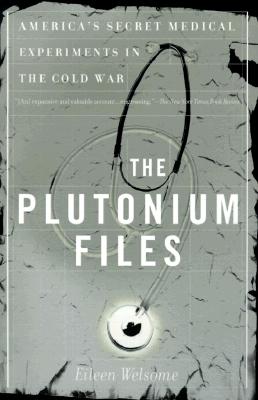Welsome's book is like a compilation of "long-read" articles describing various aspects of the United States's military's dealings with nuclear energy during the development of the first atomic bomb and through the next few decades as it attempted to find tactical uses for nuclear weapons.
For example, one chapter deals with the Massachusetts Institute of Technology (MIT) and Quaker Oats experimenting on boys in a group home:
The brainchild of scientists from the Massachusetts Institute of Technology, the Science Club offered [boys at the Fernald State School] a legal way to escape from the hated institution for a few hours. The youngsters were taken to the beach, to [baseball] games at Fenway Park and Christmas parties at the MIT faculty club. They got Mickey Mouse watches and armbands that showed they were wanted. But these weren't the kind of boys who got something for nothing. In return for the trips and the trinkets, the boys had to eat the specially prepared oatmeal scooped into their bowls each morning. They also had to submit to X rays and blood tests and collect their urine and stool samples in special containers for the scientists. The Science Club, they would learn many years later, was never designed to assuage their loneliness. It was part of a scheme concocted by MIT scientists to get the boys to participate in their radiation experiments.Physician researchers regularly viewed indigent patients as test subjects:
At Emory University's Grady Hospital, where [renowned physician Paul] Beeson worked from 1942 until 1952, researchers flocked to the emergency room on hot summer nights to study the effects of shock in stabbing and gunshot victims. They biopised syphilis patients not to cure them but to study the disease, and inserted catheters and needles into organs to study blood flow or the circulation of bacteria. "We were taking care of them and we felt that we had a right to get some return from them, since it wouldn't be in professional fees and since our taxes were paying their hospital bills," Beeson told Susan Lederer, a historian and member of the [Advisory Committee on Human Radiation Experiments (ACHRE)].Much of this story could not have been told without ACHRE, which President Bill Clinton created in 1994 "to investigate reports of possibly unethical experiments funded by the government decades ago."
These horrific experiments were conducted and authorized and sponsored by people who were convinced that the United States was going to use nuclear weapons in war and were searching for the best ways win such a war. I often think that Carl Sagan and his colleagues saved humanity with the popularization of the nuclear winter thesis, which, regardless of its veracity, posited that nobody could ever win a nuclear war.
After reading this book, the reader should have a much stronger belief in the importance of medical ethics, transparency laws and nuclear disarmament and a much weaker belief in those whose solutions to problems of human behavior are opaque and technical.

